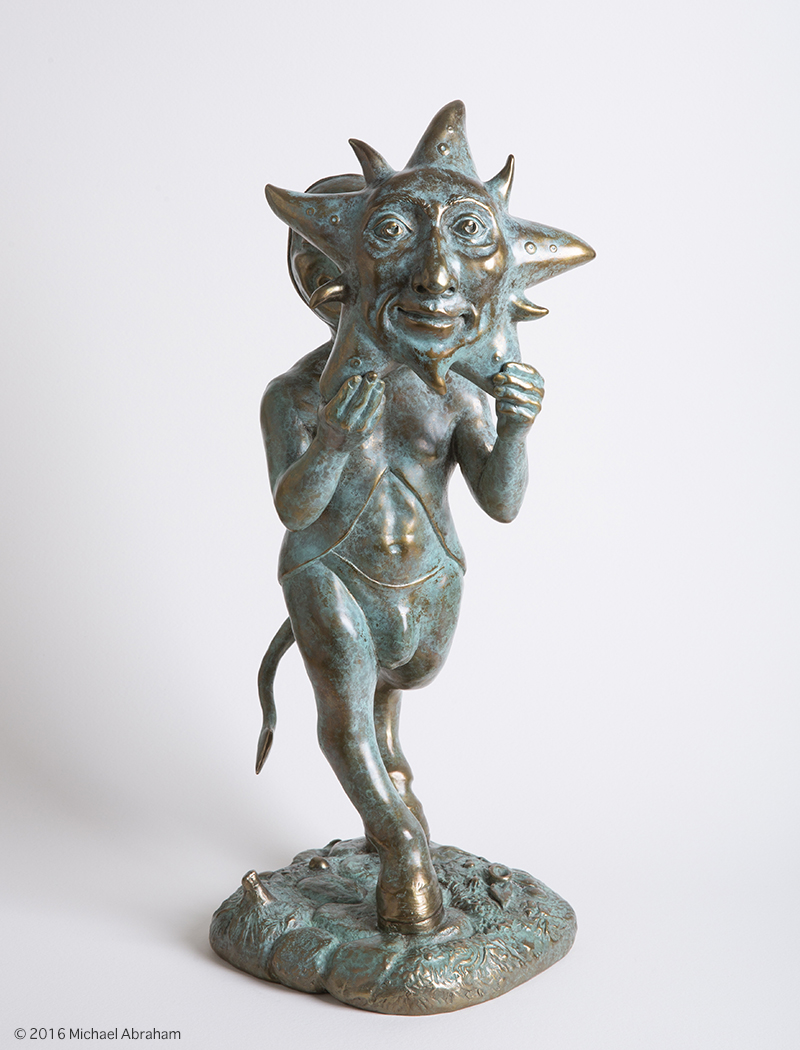
a
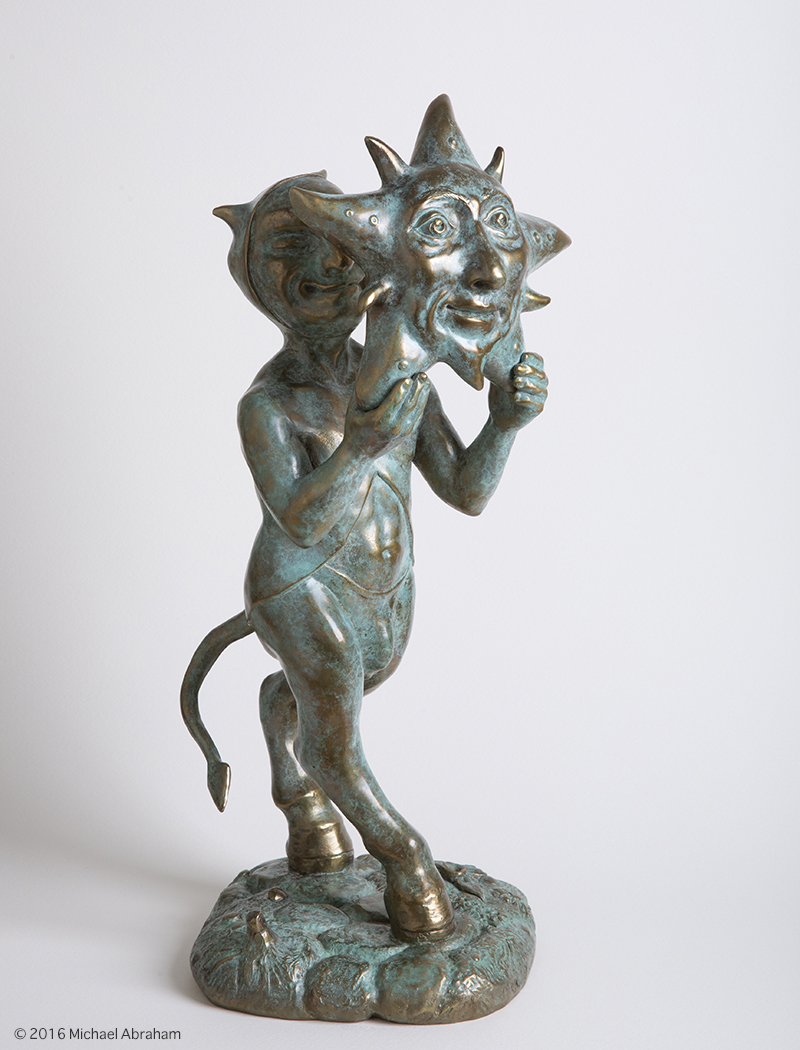
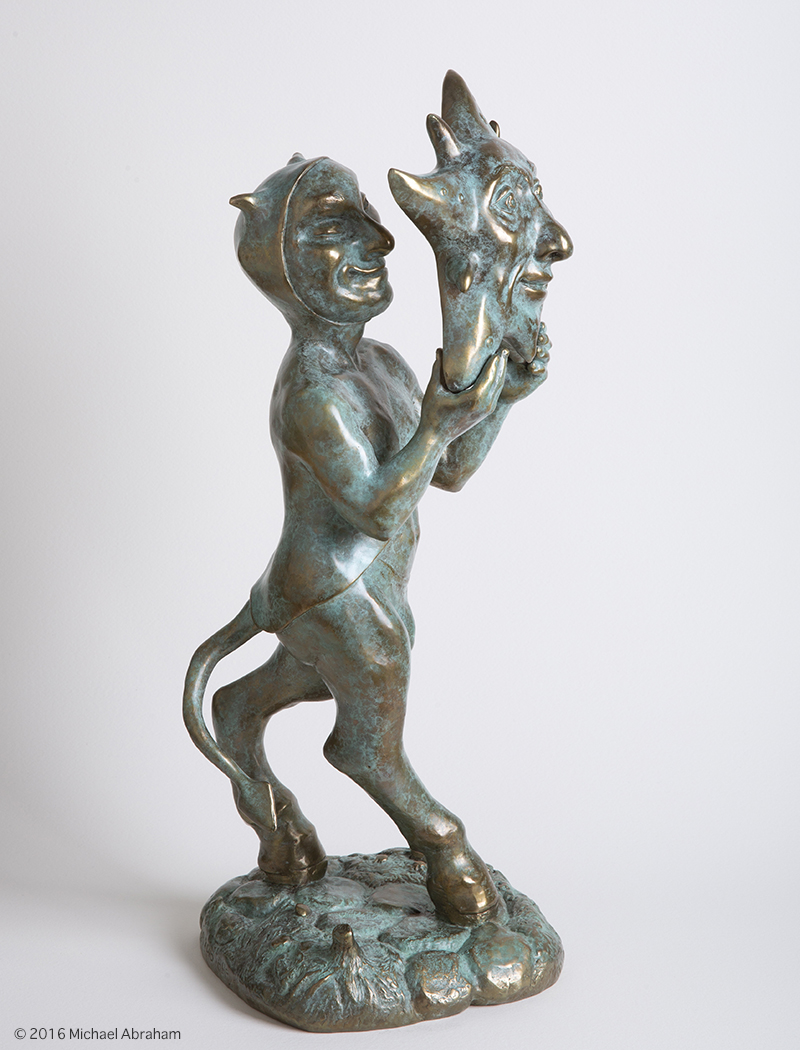
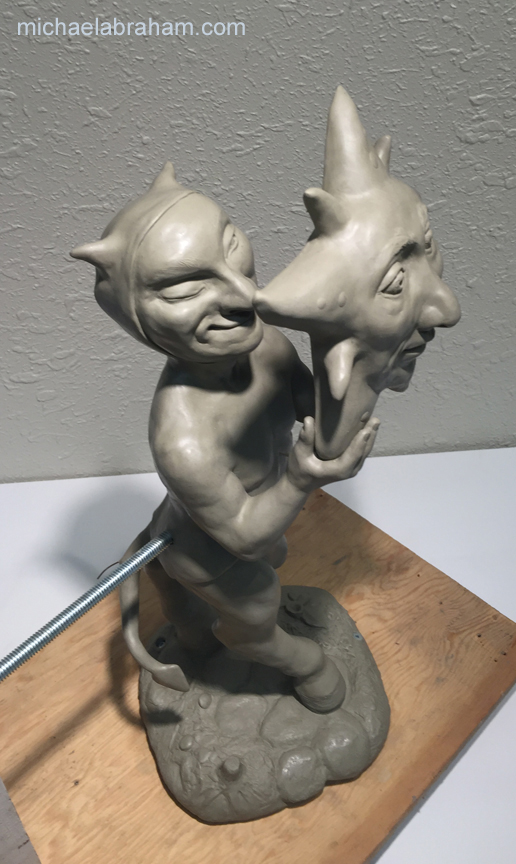
SATYR AND SUNSHINE
‘Who are we and how we present ourselves.’
A devilishly sly guy presents as himself as sunshine, while enamoured with his own grinning bravado as reflected back at him in the mirror/back of the sun. This was sculpted in the summer of 2016. There may have been a political impetus to making this sculpture, as it was sculpted at the beginning of the Trump era. It is also a recognition of the way we present ourselves as one way while knowing full well we have ‘desirous impulses’ that are expected to be contained, or that we secretly contain for our own gain.
Satyr and Sunshine, 2016, Bronze. Edition of 9, 18.5h x 9w x 9d inches
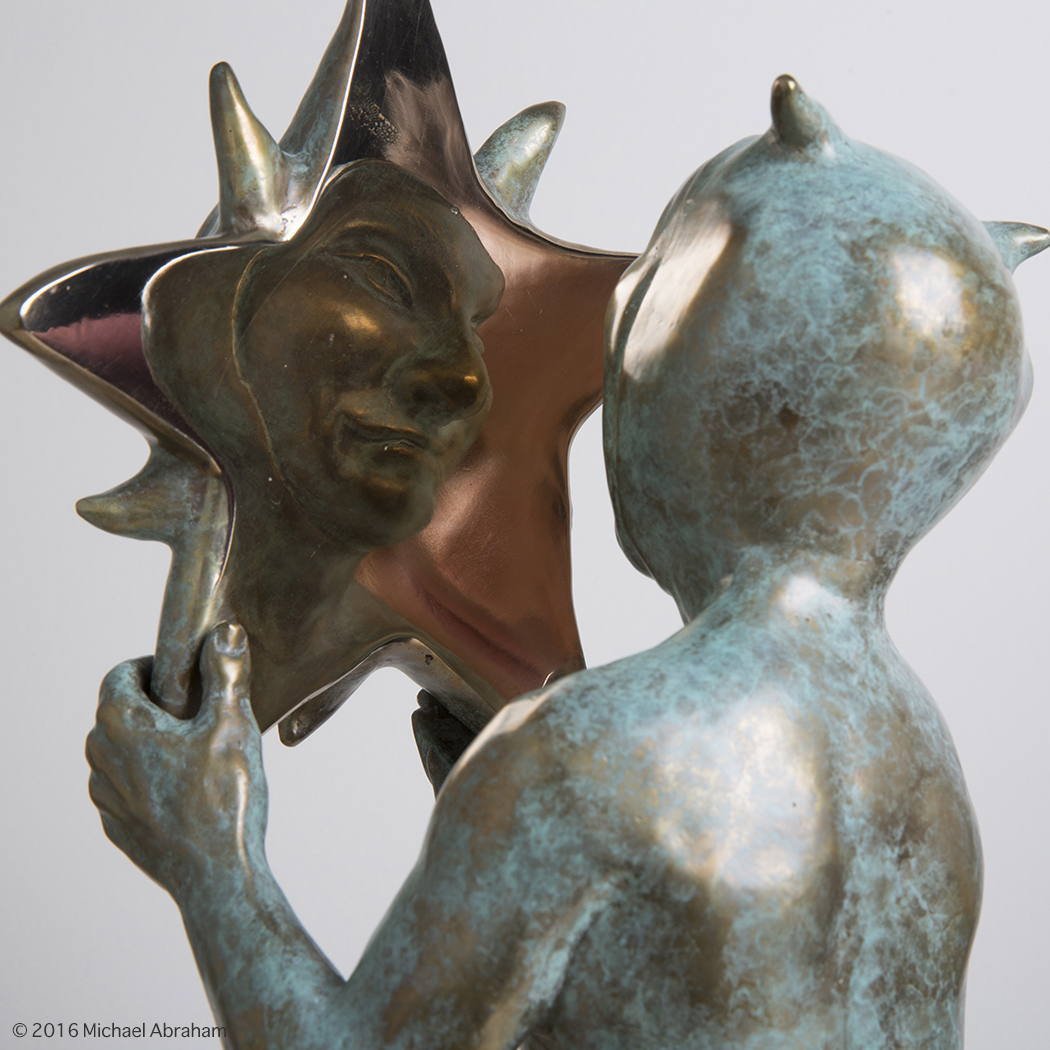
sa·tyr
/ˈsadər/
noun
- 1- one of a class of lustful, drunken woodland gods. In Greek art they were represented as a man with a horse’s ears and tail, but in Roman representations as a man with a goat’s ears, tail, legs, and horns
- 2- a man who has strong sexual desires: “Charles was an unmarried satyr“
Fun fact:
definition:horny (adj.)

